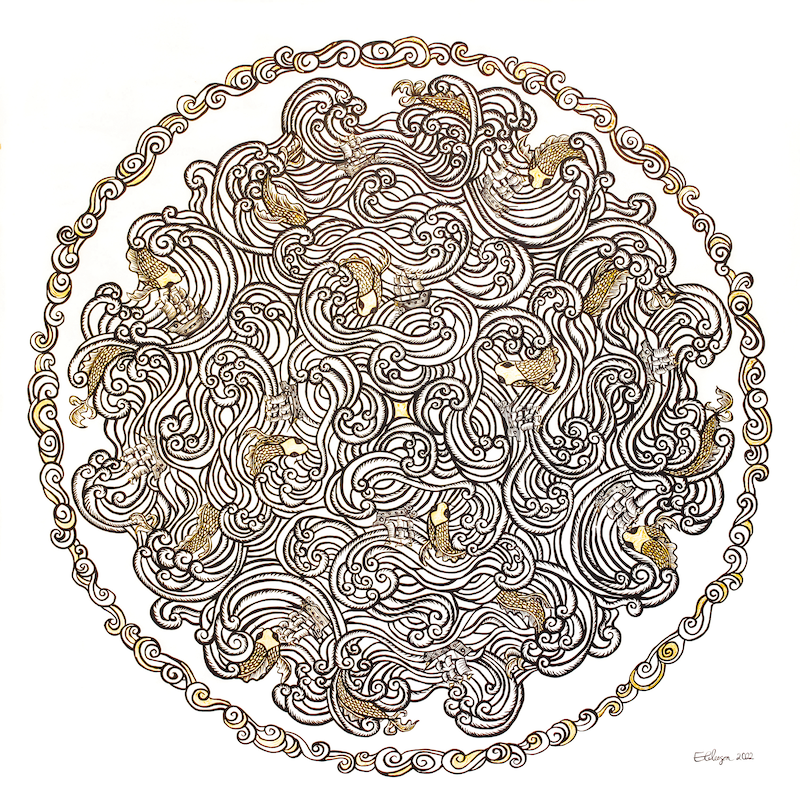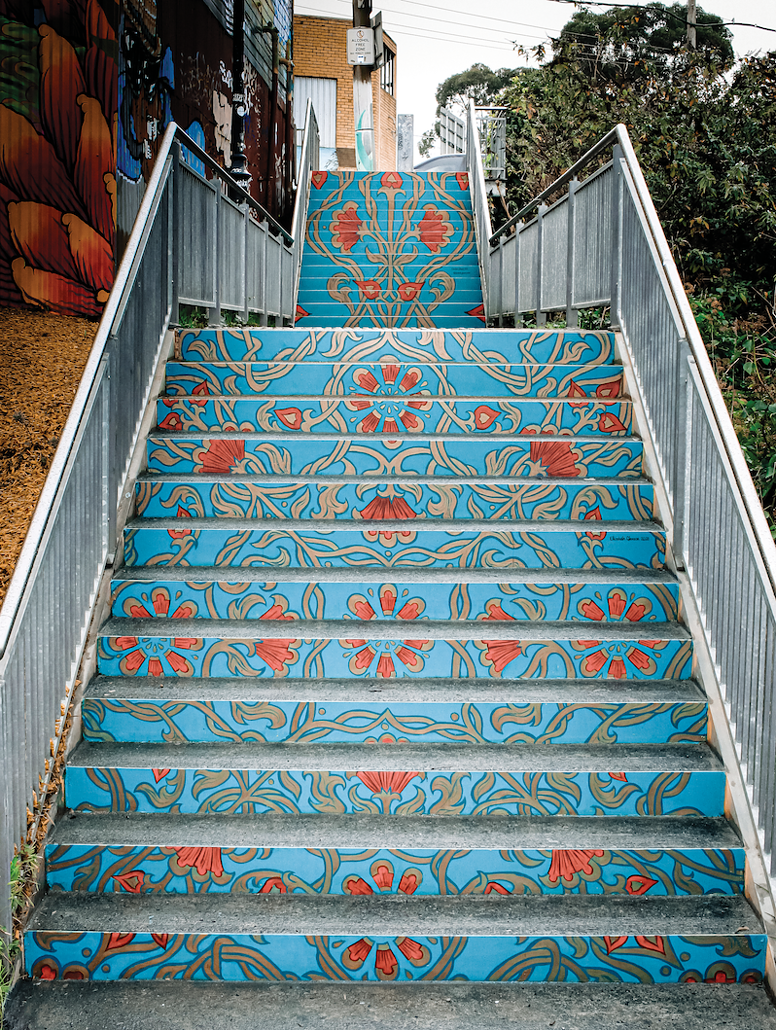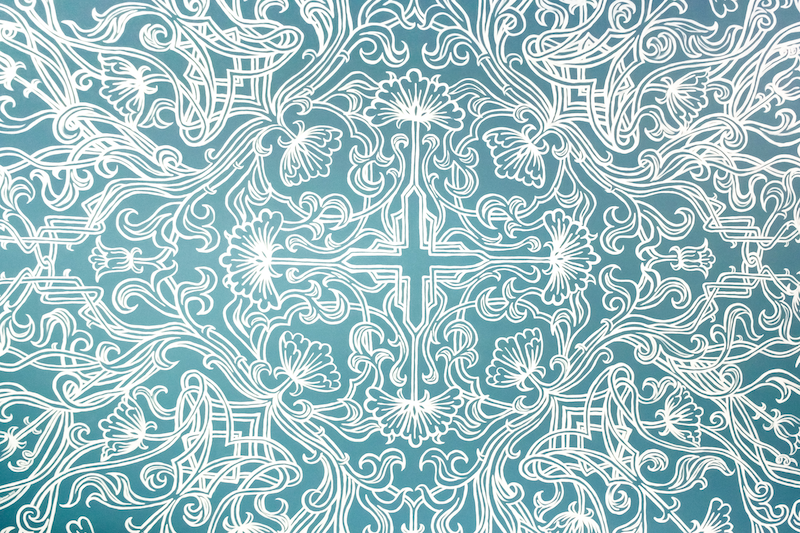“The creation of a beautiful pattern is the perfect intersection of art and maths – simultaneously revealing the magic of both,” says artist Elizabeth Gleeson, whose practice draws together the mathematical principles of repetition, reflection and symmetry to create order out of disorder.
Working comfortably with both canvas and concrete, Gleeson creates large works for public spaces as well as gallery walls, combining line, form and intricate botanicals to create visually complex works. They often take the form of a mandala, a traditional and often spiritual configuration that combines repeating symbols around a central point, fanning out in waves of mirrored segments.
Her process begins in a sketchbook. She creates individual elements drawn from her broad vocabulary of motifs, historical influences such as Art Deco and Art Nouveau, and the depth of character of Balinese design, having spent several years in Ubud during her 30s and thus having been profoundly influenced by her stay. These disparate elements are then repeated across her final surface, coming together under the artist’s careful hand. The resulting works are both elaborate and calming, encouraging the eye to move across the mandala in steady ebbs and flows.
Her work Aqueous is currently being displayed in UP Gallery in the Dandenong Ranges.
Above: Elizabeth Gleeson, Woven, 2022. Acrylic on interior wall, 230 x 230cm. Courtesy: the artist.

Elizabeth Gleeson, Aqueous, 2022. Acrylic and gold leaf on canvas, 125 x 125cm.

Elizabeth Gleeson, Promise, 2023. Acrylic on steel, public staircase with 26 steps of 2m width each.

